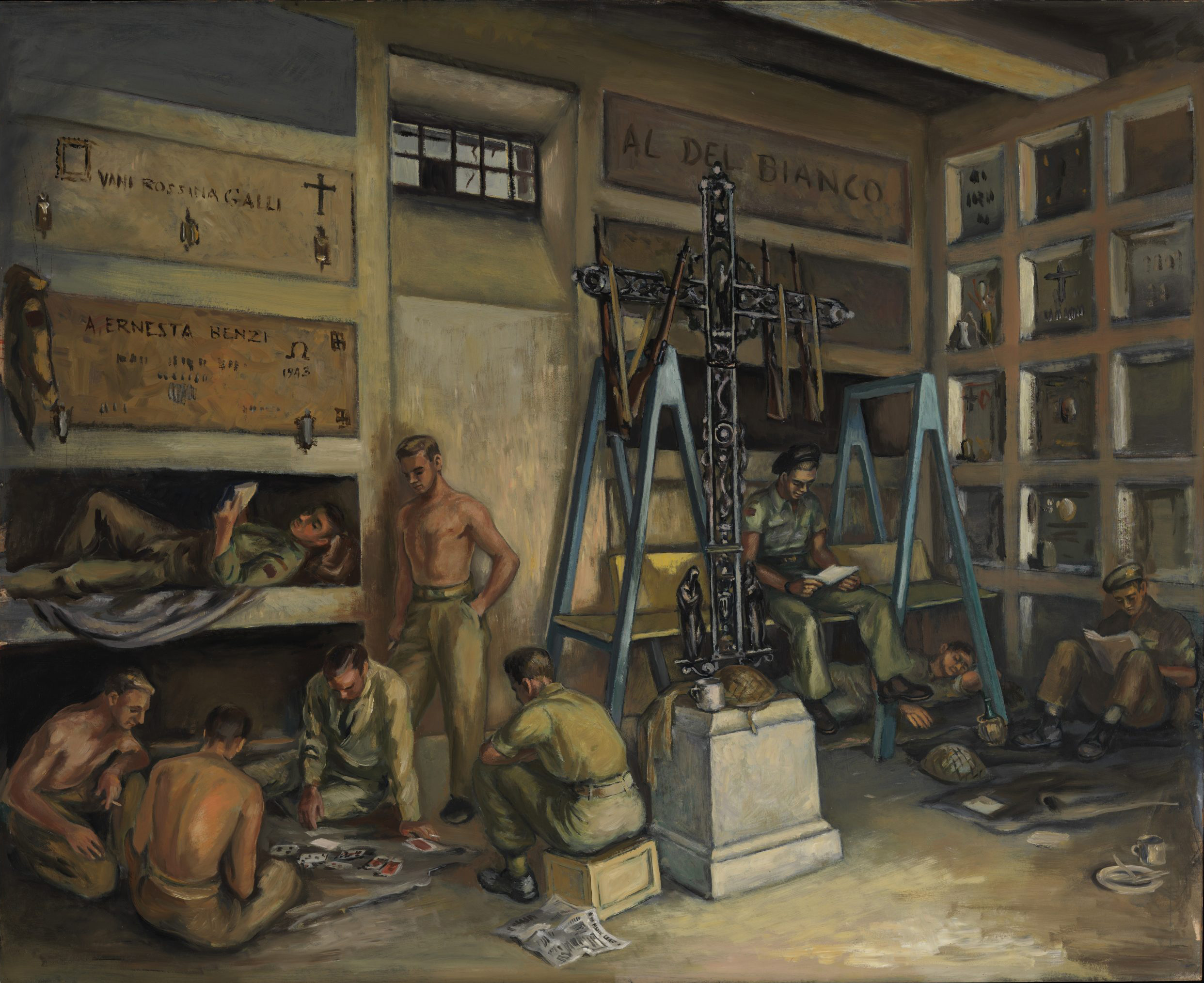Bruno Bobak, born Bronislav Joseph Bobak in Wawelowka, Poland, in 1923, emerged as one of Canada's most distinguished painters, recognized for his contributions to the country's artistic heritage. His story is one of resilience, artistic evolution, and dedication, shaped by both the turmoil of war and the tranquility of creative expression.
Early Life and Artistic Awakening
Bobak's journey began in 1925 when his family immigrated to Canada, settling in Ontario. His passion for art ignited at a young age, with formal training starting when he was just 13 under the tutelage of Arthur Lismer, a member of the Group of Seven, at Saturday morning classes in Toronto. This early exposure to art, coupled with further studies at the Central Technical School under Carl Schaefer and Elizabeth Wyn Wood, laid a strong foundation for his future endeavors.
War Artist: Capturing the Frontlines
In 1943, Bobak joined the Royal Canadian Engineers as a sapper, but it was his artistic talent that soon saw him transition to a role as a service artist and later as an Official War Artist. His experiences in Europe during World War II, particularly with the 4th Canadian Armoured Division, profoundly influenced his work. His watercolors and drawings, such as Carrier Convoy after Dark (1944), which depicts Canadian troop carriers moving through the Normandy landscape under a dusky sky, capture the stark realities and haunting beauty of war. This work, among others, became part of the Canadian War Collection, cementing Bobak's legacy as a chronicler of wartime experiences.
It was during this period that Bobak met his future wife, Molly Lamb, who was also an official war artist. Their shared experiences during the war and their subsequent life together would deeply influence both their artistic careers.
Post-War Career and Artistic Evolution
After the war, Bobak and his wife settled in Vancouver, where he took on the role of instructor and head of the Design Department at the Vancouver School of Art (1947-57). During this time, Bobak's work evolved, reflecting his fascination with humanity's complexities, as well as his interest in various artistic mediums, including pottery, metalwork, and textile printing.
Bobak's early post-war paintings were marked by expressionism, with a focus on somber glimpses of humanity. However, his style began to shift after a significant study period in London (1957-58), where he was influenced by the works of French Impressionists like Monet and English painter Joseph Turner. This influence is evident in his use of brighter colors and more expressive brushwork, seen in works such as A Field of Poppies (1962), which was acquired by the National Gallery of Canada.
Despite the growing popularity of abstract and non-objective art in the 1960s, Bobak remained committed to his own path, producing vibrant, large-scale landscapes and cityscapes that blended elements of expressionism and impressionism. His refusal to follow trends allowed him to maintain a unique voice within the Canadian art scene.

A Life Dedicated to Art in New Brunswick
In 1960, the Bobaks moved to New Brunswick, where Bruno became the resident artist at the University of New Brunswick. The following year, he was appointed Director of the Art Centre at the university, a position he held for many years. His contributions to the cultural life of New Brunswick included large public art projects, such as the wood mural for the New Brunswick Centennial Building and a metal mural for Expo 67 in Montreal.
Throughout his career, Bobak exhibited widely, both nationally and internationally, with solo shows at prestigious galleries across Canada, the United States, and Europe. His work is held in numerous collections, including the National Gallery of Canada, the Art Gallery of Ontario, and the Beaverbrook Art Gallery in Fredericton, New Brunswick.
Legacy and Recognition
Bobak's contributions to Canadian art were recognized with numerous accolades, including an honorary Doctor of Letters from the University of New Brunswick in 1986. He was also a member of several prominent artistic organizations, including the Canadian Society of Painters in Water Colour (CSPWC), the Canadian Group of Painters (CGP), and the Royal Canadian Academy of Arts (RCA).
Bruno Bobak's legacy is one of profound artistic exploration, a testament to his unwavering commitment to capturing the human experience in all its complexity. His work, deeply rooted in the realities of war and the serenity of the Canadian landscape, continues to resonate with audiences, offering a unique perspective on the 20th-century artistic narrative.
In a career spanning over six decades, Bobak remained true to his vision, producing a body of work that is both diverse and deeply personal. His life and art stand as a tribute to the enduring power of creativity and the human spirit.
Browse our collection of Canadian paintings for sale at the Canadian Classic Fine Art gallery, The best place to buy a painting online. We provide free shipping anywhere in Canada and the United States. Our Montreal art gallery sells paintings online exclusively and have a 14 days return policy.
